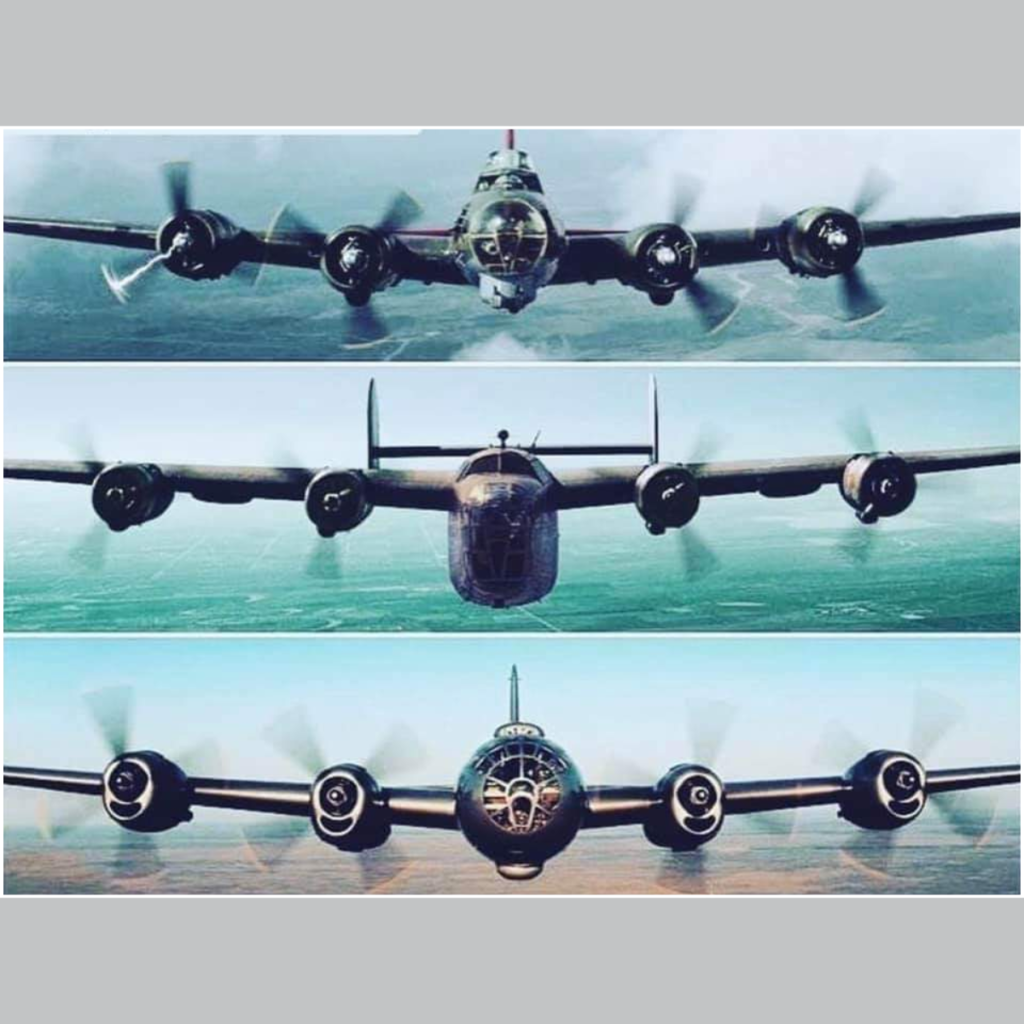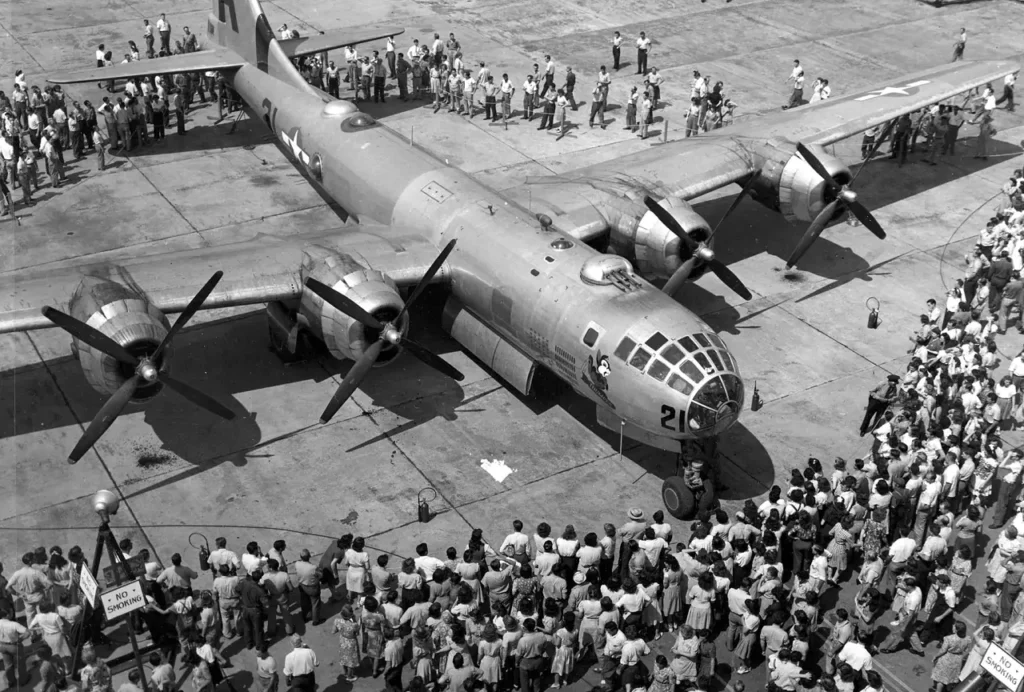
U.S. Army Air Force Bombers of World War II
The United States manufactured about 300,000 military aircraft just prior to, and during, World War II. Included in this number was large quantities of numerous bomber aircraft. Production totaled 97,810 bombers.
Featured below are the dominant military bombers used by the United States during World War II.
B-17 Flying Fortress

The Boeing B-17 Flying Fortress four-engine heavy bomber is one of the most famous, and successful, airplanes ever built. The B-17 received the name “Flying Fortress” from a Seattle news reporter who commented on its defensive firepower, and said “It’s a Flying Fortress”.
The original intent for the B-17 was the protection of the U.S. mainland from invasion fleets. In 1934, the Boeing Aircraft Company of Seattle, Washington, began construction of a four-engine heavy bomber. Known as Boeing Model 299, it first took flight on July 28, 1935. Delivery of these first production models was between January 11 and August 4, 1937.
B-17s served in every World War II combat zone. The aircraft is best known for daylight strategic bombing of German industrial targets. The B-17 flew mostly out of England, equipping 26 of the 40 bombardment groups of the 8th Air Force.
Following the end of World War II, the B-17 was quickly phased out of use as a bomber and the Army Air Forces retired most of its fleet. Production ended in May 1945 and totaled 12,731.
B-24 Liberator
:max_bytes(150000):strip_icc()/b-24-liberator-large-56a61bed3df78cf7728b6250.jpg)
The Consolidated B-24 Liberator was a 4-engine, twin-tail heavy bomber designed by Consolidated Aircraft of San Diego. Its first flight was on December 29, 1939, and it began service in 1941.
The B-24 was a more modern design than the Boeing B-17 Flying Fortress, with a higher top speed, greater range, higher ceiling, and a heavier bomb load. But the B-24 was more difficult to fly, with heavy control forces and poor formation-flying characteristics. The positioning of the fuel tanks also made the plane prone to fire. The high fuselage-mounted wings also made it more difficult to survive crash landings on land or water.
A total of 18,493 Liberators were built, more than any other aircraft in World War II.
The Willow Run manufacturing plant, located between Ypsilanti and Belleville, Michigan, was constructed during World War II by the Ford Motor Company for the mass production of the B-24 Liberator. On October 1, 1942, the first plane was completed and christened “The Spirit of Ypsilanti.”
The Willow Run Airport, with six runways to test planes, was also completed in 1942. At the peak of production, the assembly line was producing a Liberator an hour. On June 28, 1945 production ceased, after 8,685 planes had been manufactured.
B-29 Superfortress

Boeing began work on a pressurized long-range bomber in 1938. In December 1939, the Army Air Corps issued a formal specification for a so called “superbomber”, capable of delivering 20,000 lbs of bombs to a target 2,667 miles distant, at a speed of 400 mph.
The B-29 featured the first ever fully pressurized nose and cockpit in a bomber; an aft area for the crew was also pressurized. Since the bomb bays were not pressurized, a pressurized tunnel was devised to connect the fore and aft crew areas. A retractable tail bumper was provided for tail protection during nose-high takeoffs and landings.
In wartime, the B-29 was capable of flight up to 31,850 feet at speeds of 350 mph. Designed as a high-altitude daytime bomber, the B-29 flew more low-altitude nighttime incendiary bombing missions.
The B-29 is most often remembered by many for two missions that occurred in August of 1945, over the Japanese cities of Hiroshima and Nagasaki that lead to a quicki end of World War II.
Colonel Tibbets piloted the B-29 “Enola Gay” (Serial Number 44-86292) on August 6, 1945, and dropped “Little Boy” over Hiroshima, Japan. He had named the plane after his mother, Enola Gay Tibbets. The plane had been built at the Glenn Martin plant in Omaha, Nebraska.
Three days later the “Fat Man” was dropped on Nagasaki by the B-29 “Bockscar“.
A total of 3,970 production B-29s were built at several plants across the U.S.